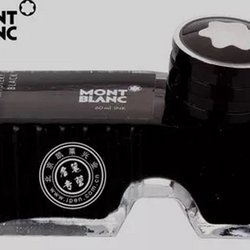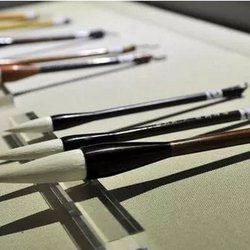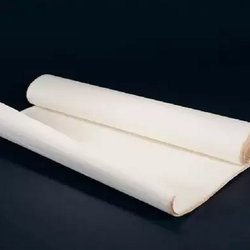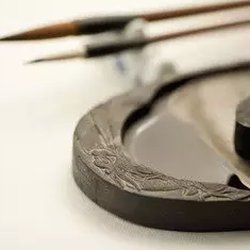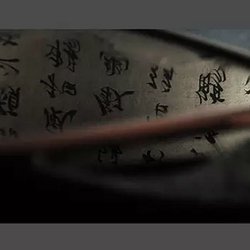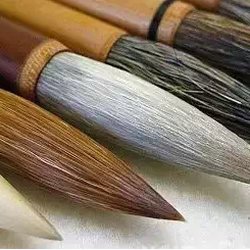Rice paper is a traditional Chinese paper used for classical calligraphy and painting, and is also one of the traditional papermaking techniques of the Han nationality. Xuan paper "began in the Tang Dynasty and was produced in Jing County." Because Jing County was under the jurisdiction of Xuanzhou Prefecture in the Tang Dynasty, it was named "Xuan Paper" after the place. It has a history of more than 1,500 years.
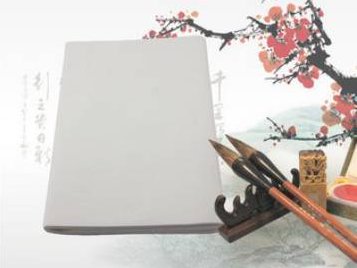
Papermaking is one of the four great inventions of ancient China. According to folklore, after the death of Cai Lun, the papermaker of the Eastern Han Dynasty (121 AD), the first year of Emperor An's reign in the Eastern Han Dynasty, his disciple Kong Dan was engaged in papermaking in southern Anhui. He wanted to create the best paper in the world and edit his master's portrait. To express my feelings of remembrance. But year after year it is difficult to do so. One day, Kong Dan accidentally saw an ancient green sandalwood tree falling by the stream. Due to being exposed to the sun and water all year round, the bark has rotted and turned white, revealing strands of slender and clean fibers. Kong Dan used them to make paper. After repeated experiments, he finally created a paper with excellent texture, which is the famous rice paper. There is a kind of rice paper called "Four Chi Dan", which is to commemorate Kong Dan and has been passed down to this day. However, this statement has no evidence and may not be credible.
Rice paper is a paper product with a long history. It is also a special paper. The use of rice paper in creating traditional Chinese calligraphy and painting has an irreplaceable role. This is because rice paper has the following significant characteristics:
1. Good ink wetting, strong durability and aging resistance, and not easy to change color. This has to do with the fibers it contains and the manufacturing process. At present, most of the National Palace Museum in China and museums of a certain size in other countries preserve Chinese paintings on rice paper. For example, ancient paintings from the Tang Dynasty that are more than a thousand years old can still be preserved to this day, but if other paper were used, they would have faded.
2. Rice paper has the characteristics of "tough but moisturizing, smooth but not slippery, white and dense, pure texture, no damage when folded and folded, and strong ink wetting ability".
3. It has unique penetration and lubrication properties. When writing, you have both bones and spirit, and when you paint, you are full of energy. It has become the calligraphy and painting paper that best embodies the Chinese artistic style. The so-called "ink is divided into five colors", that is, one stroke is completed, dark and light, the texture is visible, the ink rhyme is clear, and the layers are distinct. This is calligraphy and painting Artists use the ink moistening property of rice paper to control the proportion of ink and ink, and achieve an artistic effect by using the pen quickly and smoothly.
4. Less insect infestation and longer life. Rice paper has been known as "the king of paper and thousand-year-old paper" since ancient times. In the 19th century, rice paper won a gold medal at the Panama International Paper Competition. In addition to writing poems and paintings, rice paper is also the best paper for writing diplomatic notes and preserving high-level archives and historical materials. A large number of rare ancient books and famous calligraphy and painting ink that have been handed down in our country are mostly preserved on rice paper and are still as good as ever. Looking at the paper used for calligraphy and painting around the world, there is no quality comparable to rice paper.
According to the processing method, rice paper can generally be divided into three types: raw Xuan, cooked Xuan and semi-cooked Xuan.
The categories of Shengxuan include Jiagong, Jade Edition, Jingpi, Danxuan, Mianlian, etc. Shengxuan is unprocessed, has strong water absorption and water-clearing properties, and is easy to produce rich ink rhyme changes. Use it to splash ink and accumulate ink, which can absorb water halo ink stamps and create rich and colorful artistic effects. It is often used in freehand landscapes. Although Shengxuan's paintings are full of ink interest, they are fixed as soon as he starts writing. The ink penetrates quickly and is difficult to master.
Ripe xuan is coated with alum during processing, so the paper is harder than raw xuan, and its water absorption capacity is weak, so the ink and color will not spread when used. Therefore, Shuxuan is suitable for painting fine brushwork rather than freehand ink painting. The disadvantage is that "alum leakage" or brittleness may occur if stored for a long time. Ripe xuan can be reprocessed. Coral, mica paper, cold gold, wine gold, wax gold flower rib, pink tiger skin, etc. are all types of paper that are reprocessed from ripe xuan. If it is born in Xuan, it has strong water absorption. When writing with light ink, the ink penetrates and melts easily. Writing in thick ink is relatively easy. Therefore, when creating calligraphy and painting, you need to master the shades of ink so that you can be handy.
Half-cooked Xuan is also processed from raw Xuan, and its water absorption capacity is somewhere between the first two. "Jade Ban Xuan" falls into this category.
Rice paper is used in Chinese calligraphy and painting. The size of Chinese painting and calligraphy works actually refers to the size of the rice paper used.
Rice paper has eight major properties:
1. Flexibility
After kneading the raw material into a ball and then ironing it, it can still be restored to its original appearance as flat as before.
2. Wet dyeability
Go to the store to buy rice paper. The simplest way to judge whether it is raw or cooked is to test it with water. When water drops fall on the rice paper, the water droplets that fall on the paper gradually spread to the surroundings, and the water droplets that fall on the paper gradually spread around. What does not spread immediately or no longer spreads is ripe xuan; we call the phenomenon of water droplets gradually spreading around the raw xuan known as wet dyeing characteristics. Raw rice paper has strong wet dyeing properties, and different raw rice papers have different degrees of wet dyeing. This wet dyeing property can be used in traditional Chinese painting to enhance the charm and layering, and can be applied to calligraphy creations. If the writer has the skills If you have strong writing skills and can control the wet dyeability of ink well, you can use the overflow characteristics of ink falling into the paper to transfer the ink to penetrate inward. In this way, the ink marks left on the surface of the paper will be Penetrates into the paper. When the writer has mastered the penmanship, the wet dyeing properties of Shengxuan will make the writing full, strong and soft. After the work is framed, the ink lines will reveal a rounded and three-dimensional visual impact.
3. Ink absorbency
In addition to wet-dyeing characteristics, Shengxuan also has strong ink-absorbing properties. The wet-dying property of Shengxuan is caused by the characteristics of water. The wet-dying phenomenon caused by writing with light ink is more obvious, and the wet-dying phenomenon caused by writing with thick ink is more obvious. The degree of wet dyeing produced is relatively weakened.
It is Shengxuan's wet dyeability that makes it have strong ink absorption. In terms of wet dyeing properties, Shengxuan has strong ink absorption, which makes it produce a unique wet dyeing effect. On the contrary, Shengxuan has strong ink absorption, which makes it produce a unique wet dyeing effect. The two complement each other. Only the calligraphy and painting works created by Shengxuan have strong visual effects and charm.
4. Difficulty
Because of the difficult nature of biographical writing, many people are deterred by it.
The difficulty and astringency of Shengxuan is reflected in the pen and ink. The reason why it is difficult for the pen and ink to flow freely on Shengxuan paper is because Shengxuan has a strong astringency. This astringency makes it difficult to use both pen and ink. .
5. Light spirituality
Hold the rice paper in your hand or hang it under a stand. When the wind blows, the thin rice paper will flutter. The connection between the soft brush and the special ink effect and raw rice paper can recognize the importance of conscious activities in writing.
6. Durability
During the production process of rice paper, unstable lignin, protein and other elements are removed to the greatest extent, and almost all that remain are relatively stable fibers. This characteristic makes rice paper stable and not suitable for change, and it is pure and not easy to attract insects. Woodworm is the paper carrier that can be preserved for the longest time since ancient times. It is this characteristic that the thousand-year life of paper refers to.
7. Adhesion
Although it is difficult to write on raw rice paper, when you can master the writing technique skillfully, write the words on the rice paper, wait for the ink to dry, and then soak the raw rice paper in clean water. Even if you soak for a long time, the ink will remain intact. Rice paper will not let ink run off, that is, the ink will not melt due to immersion in water. This phenomenon is the adhesiveness of rice paper.
8. Value-added
In recent years, rice paper collection has rapidly become the target of more and more collectors and investment enthusiasts, with demand exceeding supply for several consecutive years.

